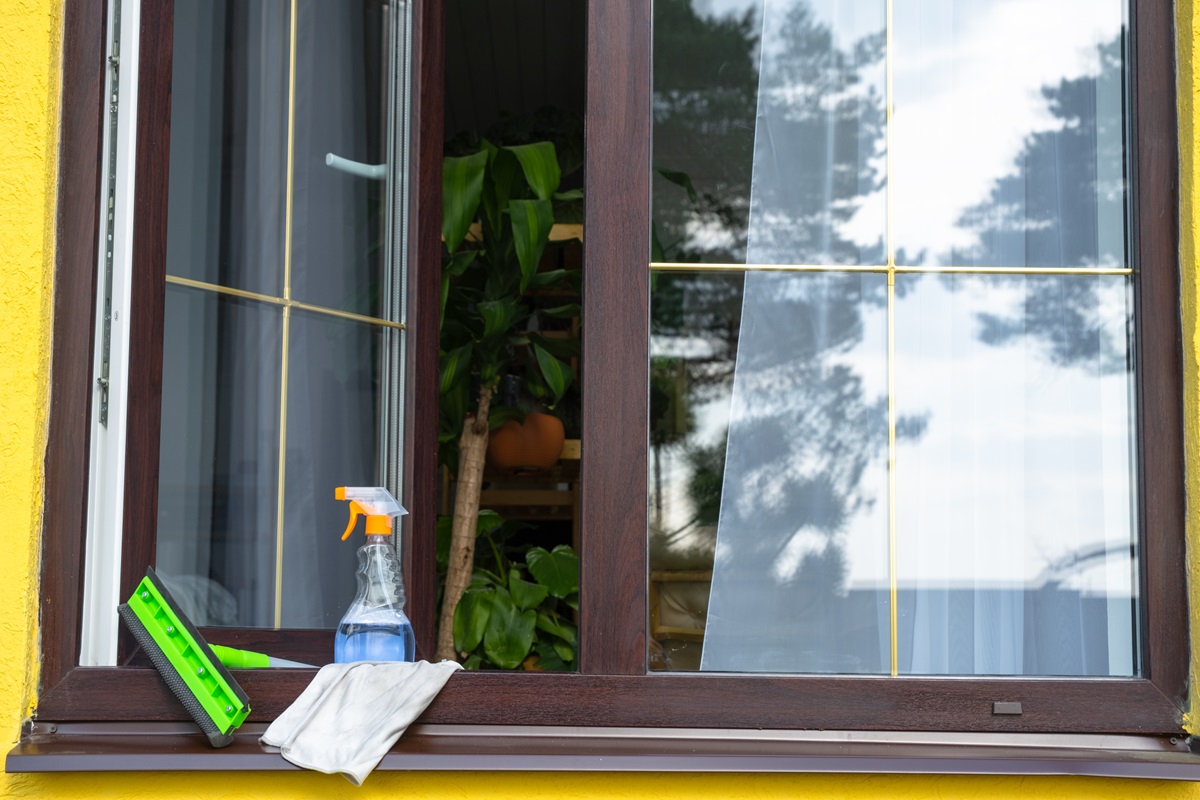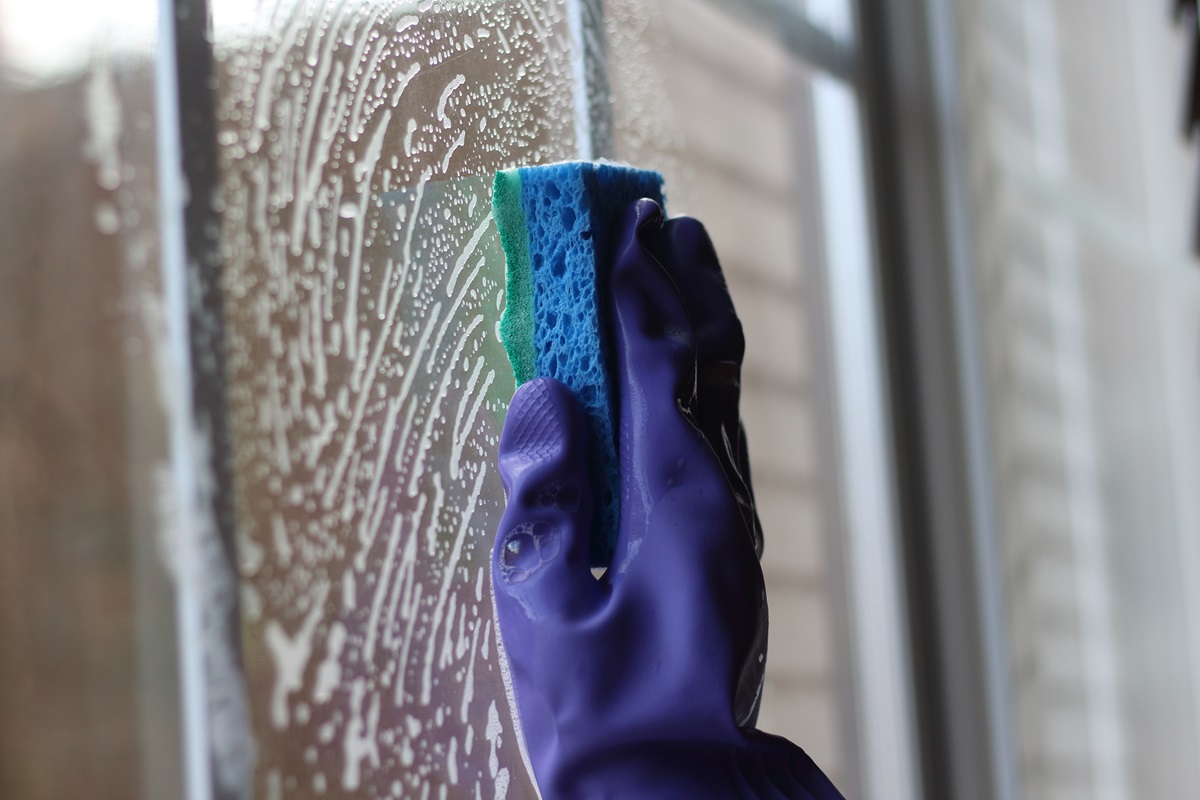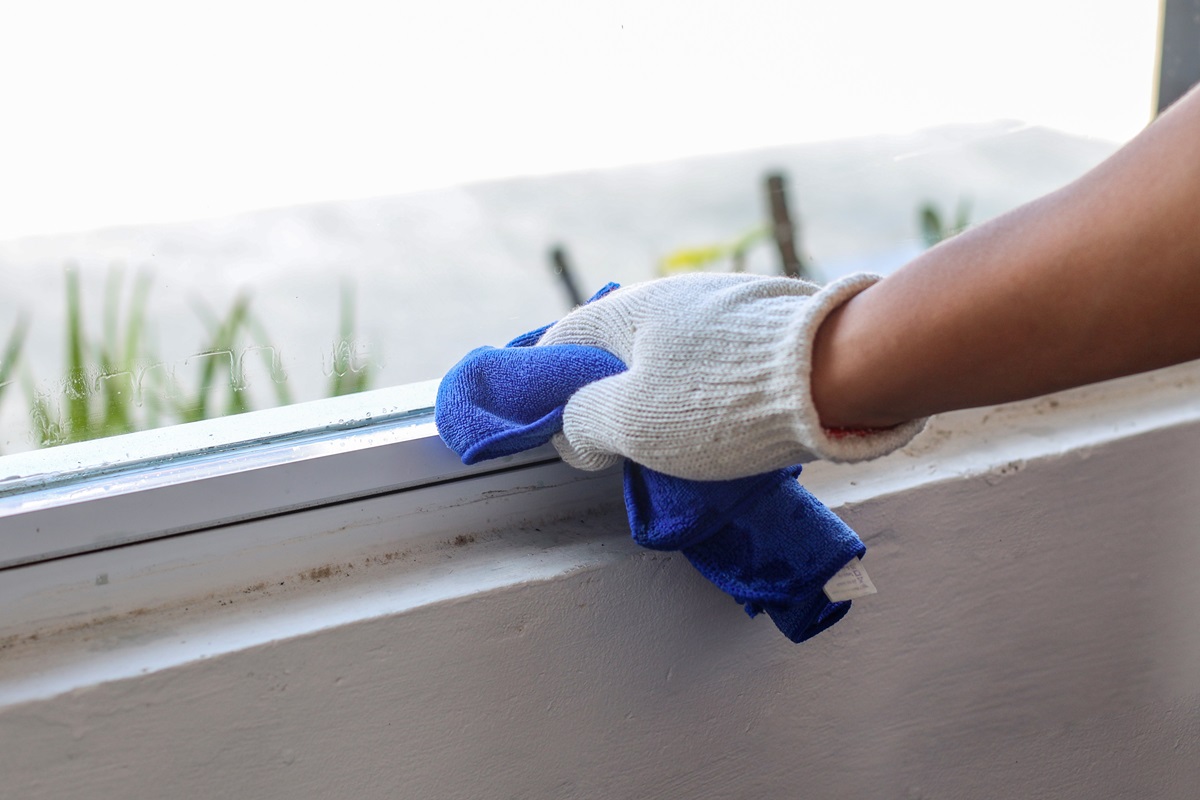Did you know San Diego’s coastal homes can accumulate up to 40% more salt residue on windows than inland properties? This unique challenge and the region’s varied climate require a tailored approach to window cleaning. Using high-quality microfiber cloths and non-abrasive solutions is just the beginning. By understanding the specific needs of your home’s location, you can tackle stubborn salt deposits and persistent dust more effectively. Discover how the right techniques and preventative measures can make a significant difference in keeping your windows pristine throughout the year.
Key Takeaways
- Use high-quality microfiber cloths for dirt and grime removal without streaks.
- Apply vinegar-based solutions to dissolve stubborn salt deposits from coastal areas.
- Implement regular inspections and hydrophobic coatings to minimize salt and dust accumulation.
- Ensure proper ventilation to prevent mold growth in window frames and sills.
- Opt for eco-friendly, non-toxic cleaning solutions to maintain a healthy living environment.
Understanding San Diego’s Climate

San Diego’s unique coastal climate, characterized by mild temperatures and occasional marine layers, directly impacts the frequency and methods required for effective window cleaning. You’ll need to account for microclimate variations that affect different neighborhoods differently.
Areas closer to the coast might experience more condensation and salt buildup, necessitating more frequent cleanings. Inland regions can have drier, dustier conditions, altering your approach.
Seasonal differences also play an essential role. During the winter, the marine layer can cause dampness, leading to streaky windows if not cleaned properly. In contrast, summer’s dry heat might make dirt and debris more adherent.
Always prioritize safety by checking weather conditions before you start, ensuring your equipment is suitable for varying microclimate conditions.
Choosing the Right Cleaning Supplies

Selecting the appropriate cleaning supplies is crucial to achieving streak-free, polished windows while safeguarding your safety and the materials’ longevity. Start by investing in high-quality microfiber cloths that trap dust and grime without scratching the glass.
Use advanced squeegee techniques to remove soapy water, swiftly minimizing streaks and water spots.
Key supplies include:
- Microfiber cloths: Efficiently trap dirt and debris.
- High-quality squeegee: Essential for streak-free results.
- Non-abrasive cleaning solutions: Protect window surfaces.
Always use non-abrasive cleaning solutions to prevent damage to window coatings and frames. Properly maintaining and replacing worn squeegee blades will enhance cleaning efficacy and ensure a longer lifespan for your windows and tools.
Techniques for Stubborn Salt Deposits

When tackling stubborn salt deposits, start with vinegar-based cleaning solutions to dissolve the mineral buildup effectively.
Use abrasive tools and materials for tougher spots, but ensure they’re safe for glass to avoid scratches.
Implement preventative measures like applying protective coatings to minimize future salt accumulation.
Vinegar-Based Cleaning Solutions
To effectively tackle stubborn salt deposits on your windows, a vinegar-based cleaning solution leverages the acetic acid’s ability to dissolve mineral buildup without harming the glass. Vinegar benefits include its non-toxic nature and cost-effectiveness. You can create homemade recipes by mixing equal white vinegar and water. Always use proper ventilation and gloves to ensure safety while handling vinegar solutions.
Prepare the solution: Mix equal parts of white vinegar and water.
Apply and wait: Spray the solution on the salt deposits and let it sit for 10-15 minutes.
Wipe clean: Use a microfiber cloth to wipe away the dissolved minerals.
These steps help you achieve clear, streak-free windows efficiently and safely.
Abrasive Tools and Materials
For particularly stubborn salt deposits, using abrasive tools like fine-grade steel wool or specialized glass scrapers can effectively remove the buildup without damaging the window surface.
When employing steel wool, ensure it’s a fine grade to prevent scratching. Apply light pressure and move in circular motions.
Use a new, sharp blade for glass scrapers and maintain a consistent angle to avoid gouging.
Sandpaper usage isn’t recommended for glass as it can cause irreversible damage.
Always wear gloves and safety glasses to protect yourself from sharp edges and debris when working with these tools.
After removing the deposits, thoroughly rinse the area with water to eliminate residual abrasive particles and ensure a clean, clear finish.
Preventative Measures Tips
Regularly applying a hydrophobic coating to your windows can create a protective barrier, greatly reducing the accumulation of stubborn salt deposits. This technique is essential for weatherproofing windows in coastal San Diego, where salt exposure is persistent. By incorporating this into your seasonal maintenance routine, you’ll preserve the clarity and longevity of your windows.
Use a high-quality hydrophobic spray: Select a product specifically designed for exterior glass surfaces to guarantee maximum efficacy.
Inspect and reapply regularly: Monitor the coating’s performance and reapply as needed, typically every 3-6 months.
Clean with appropriate solutions: Avoid harsh chemicals; use mild detergents to prevent damage to the hydrophobic layer.
These preventive measures will uphold your windows’ pristine condition, ensuring long-term durability and enhanced appearance.
Handling Dust and Grime

Effectively handling dust and grime requires using microfiber cloths and ammonia-free cleaning solutions to prevent streaks and damage to your windows. To tackle dust buildup, dust the window frames and sills with a microfiber cloth to trap particles effectively. For grime removal, mix a solution of water and a few drops of ammonia-free cleaner, ensuring you don’t damage the window glass.
| Task | Tool |
|---|---|
| Dust buildup removal | Microfiber cloth |
| Grime removal | Ammonia-free cleaner mix |
| Final wipe | Dry microfiber cloth |
Always work from top to bottom to avoid spreading dirt. Regular maintenance minimizes abrasive particles, ensuring clearer, safer windows. For best results, use distilled water to prevent mineral deposits.
Best Practices for High Windows

When cleaning high windows, always prioritize your safety by using a sturdy, extendable ladder and properly stabilizing it. High windows pose unique challenges, so incorporating the right tools and techniques is essential. Utilize extension poles to reach difficult spots without overextending yourself. Employ safety harnesses to secure yourself and prevent falls.
Here are some best practices:
- Use non-slip footwear: Ensures stability on the ladder.
- Inspect equipment before use: Check ladders, extension poles, and harnesses for any damage.
- Work with a partner: Enhances safety and efficiency.
Cleaning Window Frames and Sills

When cleaning window frames and sills, thoroughly remove dust and debris to establish a clear working area.
Use a mild detergent to prevent mold and mildew, which can compromise structural integrity and indoor air quality.
Always wear protective gloves and eyewear to safeguard against cleaning agents and potential allergens.
Removing Dust and Debris
To guarantee a thorough clean, use a soft brush or vacuum with a narrow nozzle to remove dust and debris from window frames and sills. Focusing on this initial step helps prevent dust build-up and ensures effective debris removal.
For best results:
- Brush Technique: Use gentle, sweeping motions to avoid scratching surfaces.
- Vacuum Precision: Employ a narrow nozzle to reach tight corners and crevices.
- Safety Precautions: Wear a dust mask to avoid inhaling particles.
Preventing Mold and Mildew
After removing dust and debris, you must address mold and mildew to maintain the integrity of your window frames and sills. Mold thrives in moist environments, so guaranteeing moisture control is essential. Use water and vinegar to clean affected areas, ensuring you reach all crevices. Employ proper ventilation strategies by opening windows regularly and using exhaust fans to reduce humidity.
| Step | Tools Needed | Safety Tips |
|---|---|---|
| Cleaning | Water, Vinegar | Wear gloves |
| Scrubbing | Soft Brush | Avoid harsh chemicals |
| Ventilation | Exhaust Fans, Windows | Ensure adequate airflow |
Regular inspection and cleaning prevent mold buildup, safeguarding your home’s structural integrity. Effective moisture control and ventilation strategies are your best defense against mold and mildew.
Eco-Friendly Cleaning Solutions

Incorporating eco-friendly cleaning solutions into your window cleaning routine not only safeguards the environment but also guarantees the safety and well-being of your household. Opt for cleaning agents that utilize natural enzymes and essential oils to break down dirt and grime without introducing harmful chemicals. These solutions aren’t only effective but also non-toxic and biodegradable.
Here are some top eco-friendly options:
- Natural enzyme-based cleaners: Efficiently degrade organic matter, leaving your windows spotless.
- Essential oil-infused solutions: Combine disinfectant properties with pleasant aromas, enhancing cleanliness and air quality.
- Vinegar and baking soda mixtures: A powerful, non-toxic alternative for stubborn stains and buildup.
DIY Vs. Professional Services

When deciding between DIY window cleaning and hiring professional services, it’s important to weigh factors such as cost, safety, and the quality of results. For DIY enthusiasts, initial cost savings can be attractive. However, professional services often provide superior results with advanced equipment and specialized techniques.
Safety concerns are paramount. Cleaning high or hard-to-reach windows can pose significant risks, including falls and injuries. Professionals are trained to handle these hazards effectively, using appropriate safety gear and methods.
A cost comparison reveals that while DIY might seem cheaper upfront, the potential expenses from improper cleaning or injury can quickly add up. Investing in professional services guarantees thorough, safe, and efficient cleaning, ultimately offering peace of mind and pristine windows.
Maintaining Sparkling Windows Year-Round

Opting for professional window cleaning is the first step; year-round, maintaining sparkling windows requires a strategic approach and regular upkeep. Establishing a frequency schedule guarantees you address dirt and grime before they accumulate.
Integrate seasonal upkeep to combat San Diego’s environmental challenges, such as salty air or pollen.
Using appropriate tools, such as squeegees and eco-friendly cleaning solutions, ensures safety and efficiency. Regular maintenance extends the life of your windows and enhances curb appeal and energy efficiency.
- Monthly Checks: Inspect for streaks, smudges, and debris.
- Quarterly Cleaning: Deep clean windows, frames, and screens.
- Seasonal Adjustments: Adapt cleaning methods based on weather patterns.
Keep a well-documented schedule to stay on track and maintain year-round clarity.
Frequently Asked Questions
What Is the Best Time of Day to Clean Windows?
The best time to clean windows is early morning or late afternoon. During these times, sunlight impact is minimized, and temperature considerations guarantee that cleaning solutions don’t evaporate quickly, reducing streaks and enhancing safety.
How Can I Prevent Streaks When Cleaning My Windows?
To prevent streaks, use the proper technique: clean with a squeegee and move it in a Z pattern. For drying methods, employ lint-free cloths or newspapers. Avoid cleaning on windy days to guarantee your safety.
Are There Any Specific Window Cleaning Tools Recommended for Tall Buildings?
To clean windows on tall buildings, you should use telescopic poles for extended reach and safety harnesses to guarantee secure operation. These tools enhance safety and efficiency, allowing you to clean thoroughly without risking falls.
How Often Should Windows Be Cleaned in Coastal Areas?
In coastal areas, windows should be cleaned every 1-2 months. Coastal debris and salt buildup can corrode glass and frames. Regular maintenance guarantees longevity and safety. Use appropriate cleaning solutions and equipment to prevent damage.
Can I Use Homemade Cleaning Solutions for Effective Window Cleaning?
You can use homemade cleaning solutions. Did you know that 75% of people prefer eco-friendly alternatives? Vinegar solutions are highly effective and safe for surfaces, offering a non-toxic, efficient way to clean your windows.

